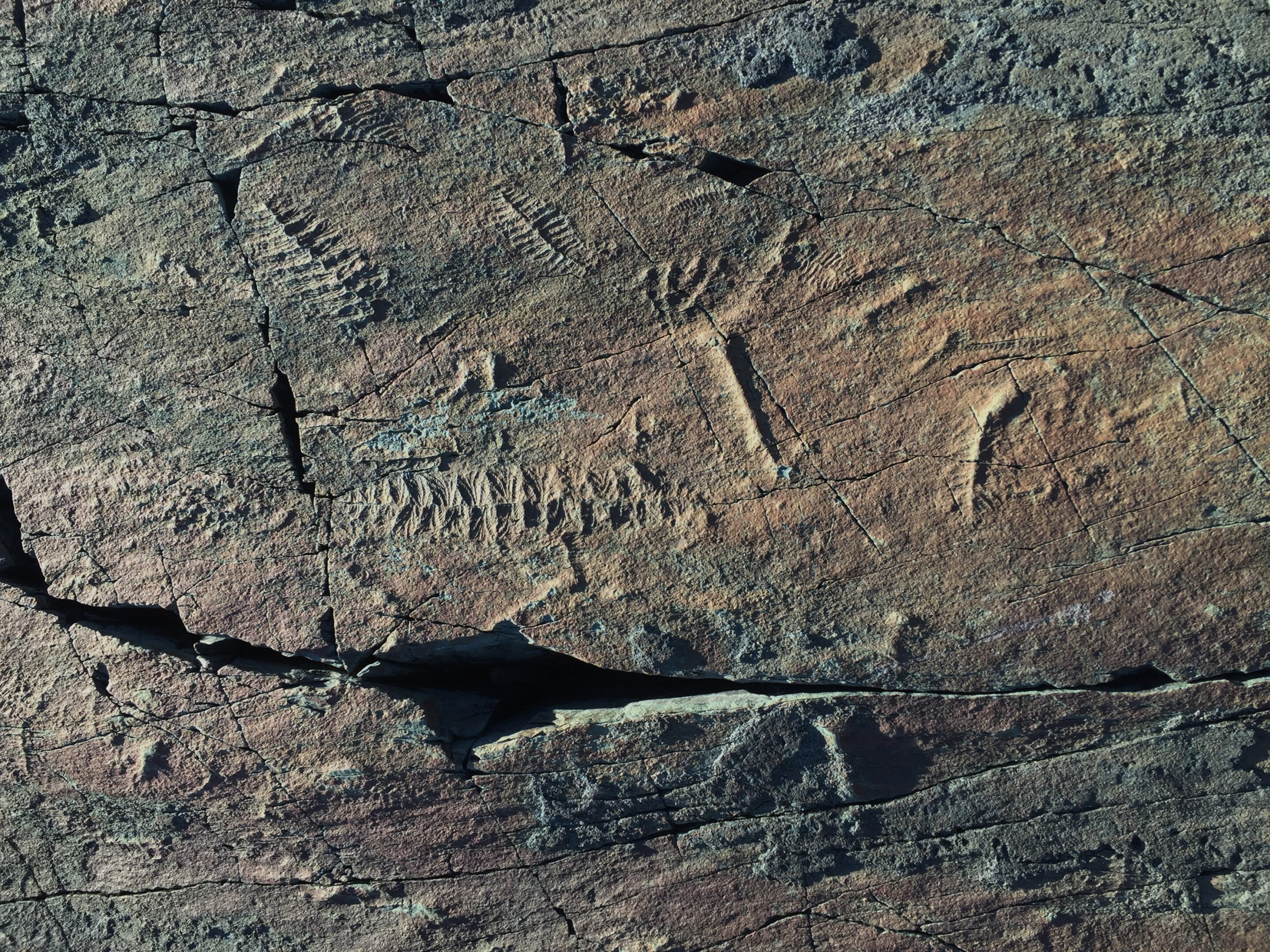 |
| Fossil records of early animals from Mistaken Point Ecological Reserve in Canada. Credit: Dr Emily. G. Mitchell/University of Cambridge |
According to a recent study, oxygen levels in the Earth's atmosphere were believed to have varied drastically 1 billion years ago, generating conditions that might have hastened the emergence of early animal life. Scientists think atmospheric oxygen evolved in three stages, beginning with the Great Oxidation Event around 2 billion years ago when oxygen first emerged in the atmosphere. Around 400 million years ago, the third stage saw atmospheric oxygen reach current levels. What is unknown is what occurred during the second stage, known as the Neoproterozoic Era, which began around 1 billion years ago and lasted approximately 500 million years, during which time early kinds of animal life arose.
Scientists have attempted to address the following questions: Was there anything unusual about the fluctuations in oxygen levels throughout the Neoproterozoic Era that may have had a vital role in the early development of animals? Was the increase in oxygen levels abrupt or gradual? In sedimentary strata 541 to 635 million years old, fossilized remnants of early creatures known as Ediacaran biota, multi-celled organisms that required oxygen, have been discovered.
A study team led by the University of Leeds and backed by the Universities of Lyon, Exeter, and UCL used measurements of the various types of carbon, or carbon isotopes, found in limestone rocks retrieved from shallow oceans to try to answer the issues. The researchers were able to compute photosynthesis levels that occurred millions of years ago and extrapolate atmospheric oxygen levels based on the isotope ratios of the different forms of carbon discovered. They were able to generate a record of oxygen levels in the atmosphere for the last 1.5 billion years as a consequence of the computations, which shows us how much oxygen would have been diffusing into the ocean to sustain early marine life.
Dr. Alex Krause, a biogeochemical modeler who got his Ph.D. at the School of Earth and Environment at Leeds and was the project's main scientist, said the findings provide a new viewpoint on how oxygen levels on Earth are changing. For the first 2 billion years of its life, the early Earth was anoxic, with no atmospheric oxygen. The Great Oxidation Event occurred when oxygen levels began to climb. Scientists previously believed that during the Great Oxidation Event, oxygen levels were either low and then spiked right before the first creatures arose, or that oxygen levels were high for many millions of years before the animals appeared. However, our research showed that oxygen levels were significantly more volatile. For a long period before the emergence of animal life, there existed an oscillation between high and low oxygen levels. We're witnessing times when the ocean environment, where early creatures lived, had plenty of oxygen, and then periods when it didn't.
According to Dr. Benjamin Mills, who directs the Earth Evolution Modeling Group at Leeds and oversaw the experiment, this periodic change in climatic circumstances would have resulted in evolutionary forces that caused some life forms to fall extinct and other ones to arise. The oxygenated eras increased the number of livable places in regions of the ocean where oxygen levels were high enough to sustain early animal life forms. The ecological theory proposes that having a livable environment that expands and contracts can enable fast changes in the diversity of biological life. When oxygen levels fall, some creatures face the extreme environmental strain, which may lead to extinction. When the oxygen-rich waters spread, the survivors gain ecological dominance. These increased livable zones would have lasted millions of years, providing ecosystems plenty of time to flourish.
The findings were reported in Science Advances.
Journal Information: Alexander J. Krause, Extreme variability in atmospheric oxygen levels in the late Precambrian, Science Advances (2022). DOI: 10.1126/sciadv.abm8191. www.science.org/doi/10.1126/sciadv.abm8191



0 Comments